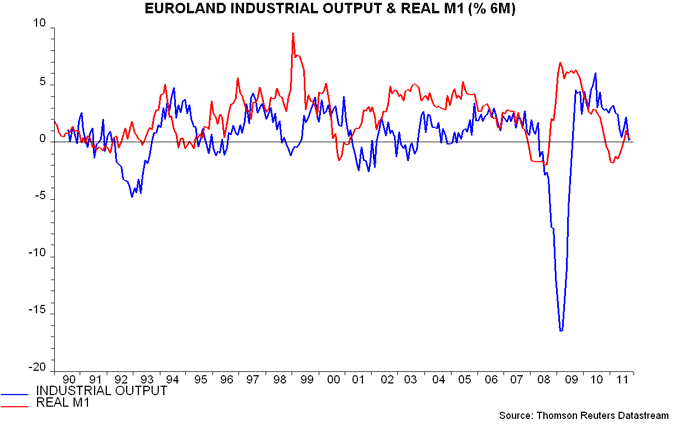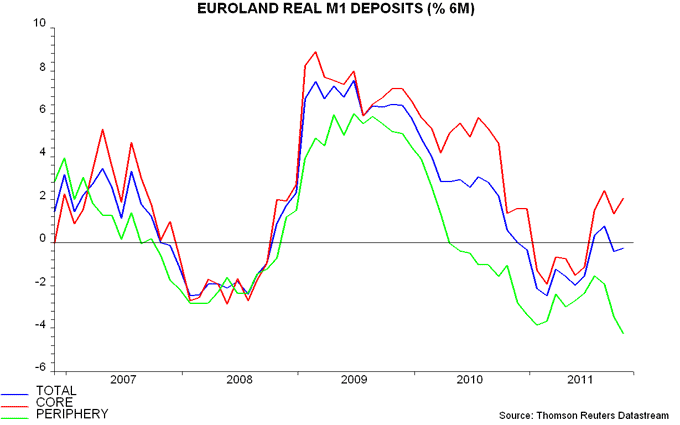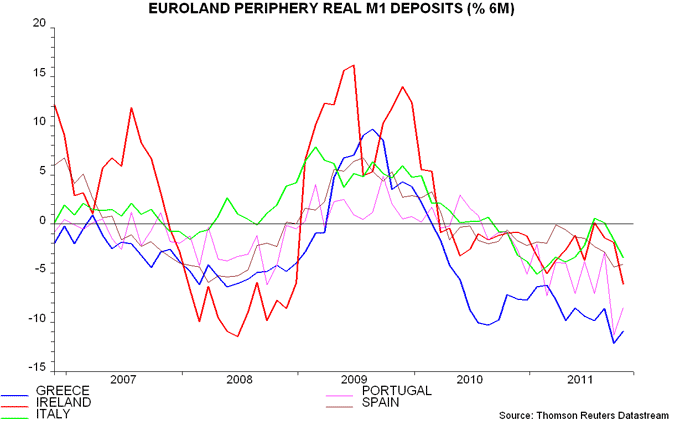Eurozone monetary statistics for October are weak but the bigger story is a widening core / periphery divergence, with an accelerating decline in real M1 deposits in the latter group suggesting that economies remain locked on course for a depression barring radical ECB action.
M1 – comprising currency in circulation and overnight deposits – is a better leading indicator than the broader M3 measure, probably because households and firms increase their holdings of more liquid forms of money before raising spending. The six-month rate of change of Eurozone-wide real M1 turned negative in late 2010, warning that a recession would develop during 2011. The six-month change has since returned to positive territory but remained weak at just 0.3% (0.5% annualised) in October – see first chart.
The ECB publishes a country breakdown of overnight deposits but not currency. Region-wide real M1 deposits fell by 0.3% in the six months to October but this conceals a 2.1% rise in core economies (i.e. Germany, France, Netherlands, Austria, Belgium, Luxembourg) offset by a record 4.2% decline (8.3% annualised) in the periphery (Italy, Spain, Greece, Portugal, Ireland) – second chart. Peripheral weakness partly reflects capital flight into the core or out of the euro area altogether but this does not alter the economic implications – money leaving M1 accounts will not be spent domestically.
The annualised fall in the six months to October was 20.7% in Greece, 16.3% in Portugal, 11.8% in Ireland, 8.1% in Spain and 6.7% in Italy. The Portuguese reading confirms that last month’s slump was no fluke while Irish and Italian numbers have deteriorated markedly since the summer, when there were tentative signs of real M1 deposits stabilising – third chart.


